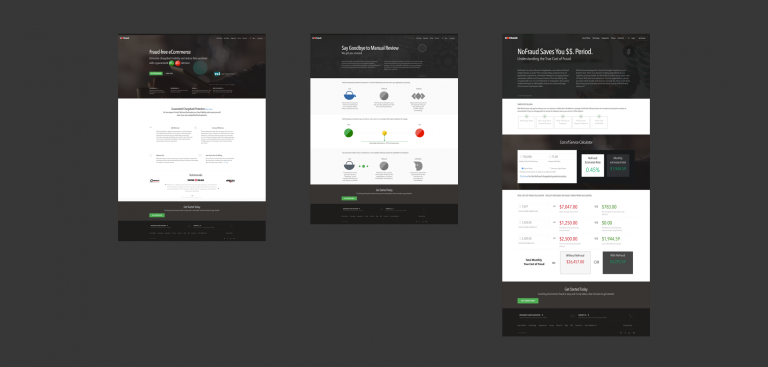EDITOR’S NOTE: This article is about how data management platforms (DMPs) can assist decision-makers in organizing their data in ways leading to strategic insights. True Interaction built SYNAPTIK, our Data Management, Analytics, and Data Science Simulation DMP, specifically to make it easy for leaders to collect and manage data to get to insights faster. For more information or a demo, please visit us at https://synaptik.co/ or email us at hello@www.true.design.
A data management platform, or DMP, imports, stores and compiles customer or target audience data from various sources and makes it actionable. It can ingest, sanitize, sort and format data. Most importantly, it can analyze and segment this data and present it in a visual format that is easily understood and made use of by executive decision makers.
In the AdTech/Martech world, there’s a common misconception that DMPs are somehow exclusive to the digital advertising ecosystem where DMPs produce audience segments that are syndicated to external ad targeting and content delivery platforms and compared across channels. The reality is that everyone from toy stores to hedge funds and even government agencies are employing DMPs for internal data management. Finance firms may use a DMP for data forensics. Retail giants are increasingly employing DMPs as 1:1 data engines that personalize the e-commerce experience with recommendation engines and displays based upon rich user profiles. Enterprise organizations and SMBs alike utilize DMPs for non-advertising/marketing tasks such as aggregation of scraped and purchased data sets, business intelligence, product management and inventory. In fact, DMPs utilizing AI have been replacing traditional supply chain management departments at a rapid pace in 2017.
Both B2B and B2C organizations leverage a DMP to understand customer audiences based upon conversion, engagement and purchase rates and to target audiences with personalized and therefore more effective messaging. A typical B2B use case involves the matching and correlation of 1st party data with 3rd party data for look alike modeling which provides channel clarity and really enables business to build profiles at a company level that groups together individuals associated with or employed by organizations that are sales targets.
The first thing an organization that is considering purchasing a DMP should do is establish what the process and flow will look like for the intake of data from multiple sources stored in various locations. Run a test with a month’s worth of data. See what kind of issues you encounter getting your data ingested and normalized. Concurrent to establishing a process for input, you want to understand your own business goals and ultimately identify what is of value to your team’s mission. This could be new registrations and cohort starts and the VPA Value Per Acquisition or CLV Customer Lifetime Value. An organization could simply want to understand what the impact of their newly refurbished, responsive website is on their e-commerce and what platform, device or browser are their most avid customers using. Prioritize the top 4 or 5 data points and make sure these are stood up as part of the initial integration.
In the digital advertising industry, it can be a challenge to differentiate between a DMP and a demand-side platform (DSP) as the lines are continually blurred. Some DSPs have begun to offer DMP functionality to inform their ad purchasing and to avoid lag and integration problems that typically result from today’s fragmented martech/adtech stack. Some have morphed into SSPs that integrate with multiple DMPs while simultaneously offering their own DMP service. Bottom line though: DMPs store and process data, sort it and provide context and insight. Beyond that, they don’t function as an exchange or DSP. A DMP does not coordinate programmatic ad campaigns for you.
A DMP can be used to map different SourceIDs and cookie IDs across the ecosystem. This is major problem that needs resolution in that an industry standard does not exist. So, you have Ad networks, mobile exchanges, middle man measurement tools, data management platforms, fraud vendors, SSPs, agency trading desks and DSPs all using various IDs to track transactions. Attribution can get quite complicated.
A good DMP can cleanse and process structured and unstructured data alike and generate visual analytics for the data from multiple departments, programs and campaigns. Ideally, the data becomes actionable and decisions become validated, justified and quantified by the insights produced. Data is compartmentalized and segments may be produced. As we approach 2018, I can’t imagine recommending a DMP that is not 100% cloud based, as it needs to scale. Similarly, it should possess an intelligent layer of machine learning. A good DMP offers their users the option of either API stream or S3 data bucket upload, whichever is preferred by the customer.
Clearly the point is to manage one’s data but also to merge it and make sense of it. Ultimately, a DMP should enable the monetization of an organization’s data. A good DMP will create one holistic view of all data within an organization. Synaptik is a DMP that is flexible enough to address you strategic data needs across a number of organizational functions: Finance, Analytics, IT, Marketing, Operations and Customer Relation Management, among others. Synaptik’s advanced intelligent layer can even draw correlations between the different data. While most businesses are overwhelmed by the sheer volume of data that they are failing to leverage, others may be intimidated by the thought of purchasing a DMP because they don’t think they have the capacity, or the technical DNA in house to take this kind of thing on. Well, a DMP is supposed to minimize both labor and angst and should come with frictionless on-boarding and attentive support for rule mapping and customization. The DMP staff should be falling over themselves to meet your terms. Pointing customers to a rabbit hole of self help technical article links and leaving it up to the customer to figure out how best to get things up and running is not acceptable. The DMP you select should be intuitive enough for you to figure out how to configure it on your own once it’s been deployed. Lastly, a good DMP should feel be agnostic and customizable.
At True Interaction, we pride ourselves in our Digital Transformation Services along with our Data Intelligence acumen. Please schedule a time to have a discovery conversation today.







